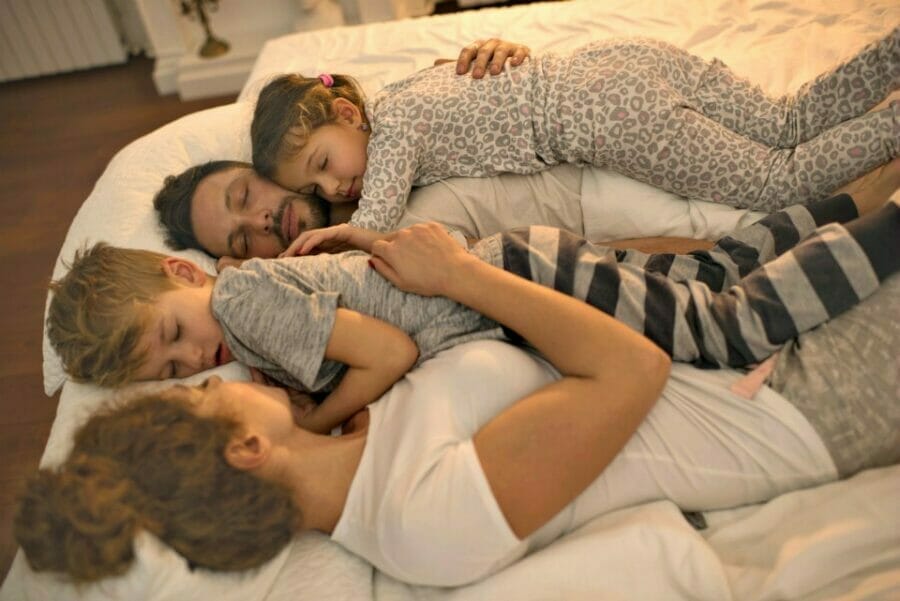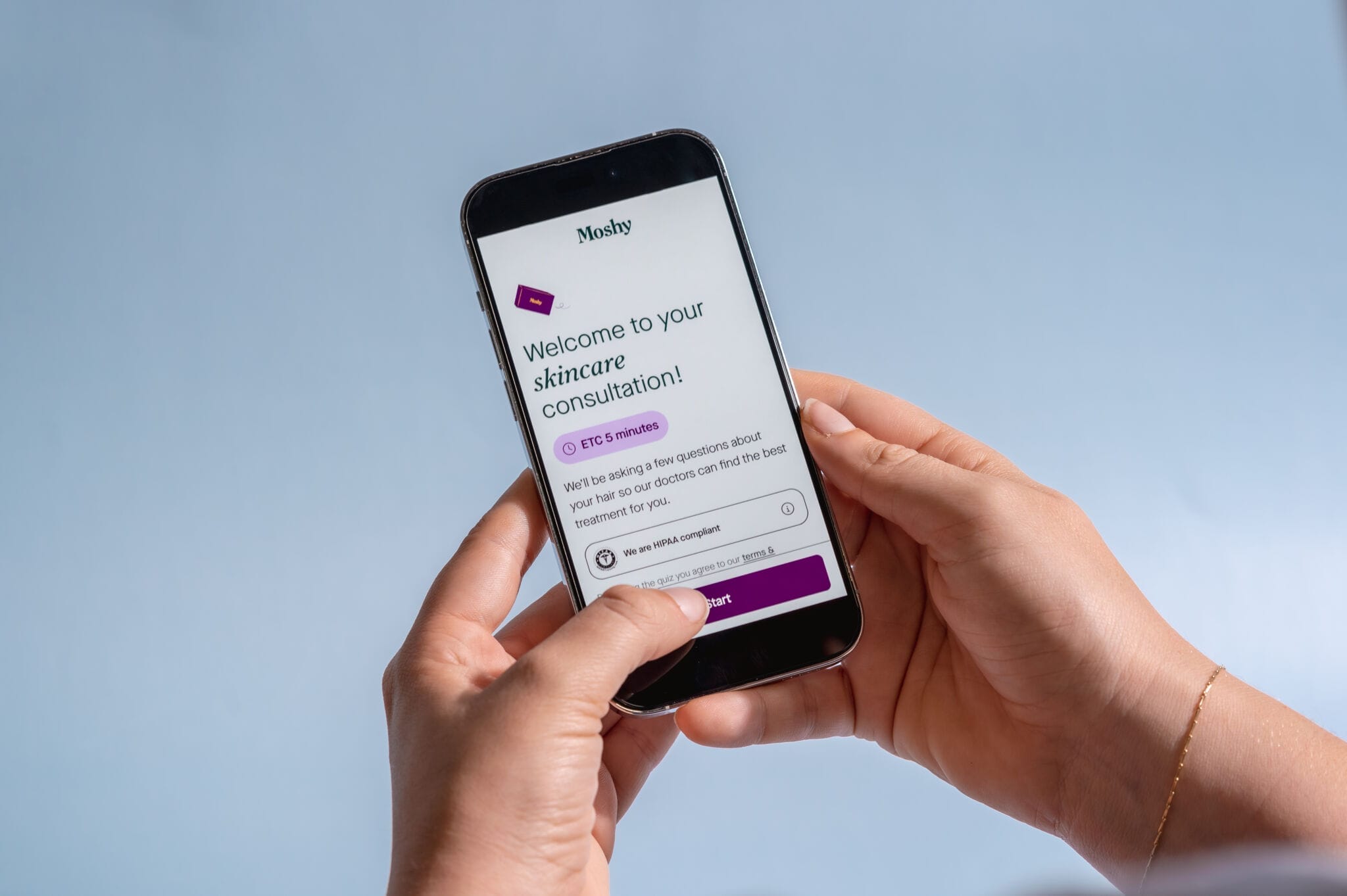Getting to the calm zone – why sleep is so important
Clinical Psychologist Lynn Jenkins is one of our amazing Healthy Mummy wellness experts. In a recent podcast, she discusses how to get into the calm zone and sleep better.
Ah the elusive sleep – what we’re all chasing and all so desperately need and yet can’t always get a handle on.
We all know sleep is important but what effects can it have on our mental health and that of our children?
Sleep helps the body and brain function properly. A good night’s sleep can help improve your learning, memory, decision-making, and even your creativity.
In fact, sleep is important for energy, lowering the risk of disease, and reducing stress. Lynn explores this and how to develop good sleep habits for improved mental wellbeing in her podcast.

Why sleep is so important
As a clinical psychologist Lynn shares what comes into her clinic room and the most common reasons for sleep issues in children. There’s a lot more to sleep than what she can offer from a psychological point of view, such as our nutrition and hormones. But what Lynn sees with sleep issues from a psychological standpoint are the core worries – being alone and the dark.
We can all relate to worries as adults as when we’re going off to sleep, we have free time for our thoughts to come in and it’s then we tend to analyse everything.
From a biology point of view, what our system is actually doing during this is assessing threat. If we were to go over how we spoke with someone that day and think to ourselves why that person didn’t smile at us, or seemed cold, our system is almost checking to see if we’ve been rejected and how it can prepare for that again.
Kids go through a version of this too. Temperament, personality and genetics come into play when there’s a tendency to overthink at night. It’s like they are processing events in their day and their system is working out how threatened they were, and what can they do to prepare for it happening again.
Being alone
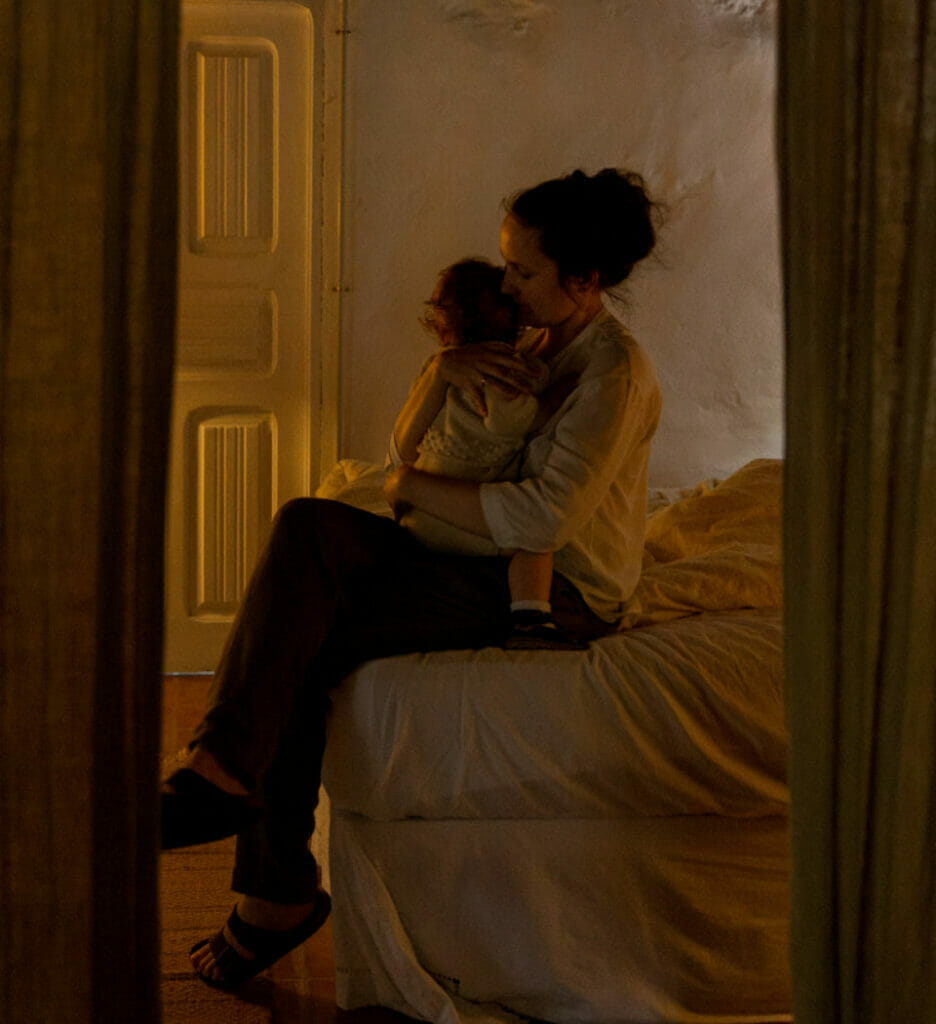
The concept of being alone is an interesting one because it’s not necessarily the event itself but the meaning we attach to it. It’s important to understand what the child’s concept of being alone means to them. Some kids don’t like being alone and crave company.
It doesn’t need to be logical and it could stem from subconscious trauma.
As Lynn recalls from treating a child with sleep issues, “All the usual methods didn’t work and so we tried hypnotherapy. We discovered when she was birthed she was extremely distressed in the birthing canal. She was alone and in the dark and this is how she described being alone in her bedroom at night time. To her body and her nervous system this was very scary.”
We have something in us called the neuroception, which is our body’s unconscious threat detector. The term “Neuroception” describes how neural circuits distinguish whether situations or people are safe, dangerous, or life threatening.
Neuroception explains why a baby coos at a caregiver but cries at a stranger, or why a toddler enjoys a parent’s embrace but views a hug from a stranger as an assault.
Incredibly, only 5% of our mind is conscious such as what communicates with language, or understanding of other people’s words. 95% is unconscious.
An unconscious mind could be likened to a record button being pressed right from the beginning, even in utero, and it records everything and that feeing of being alone would fall into that category. It’s anyone’s guess as little children what is being collected unconsciously.
Dark
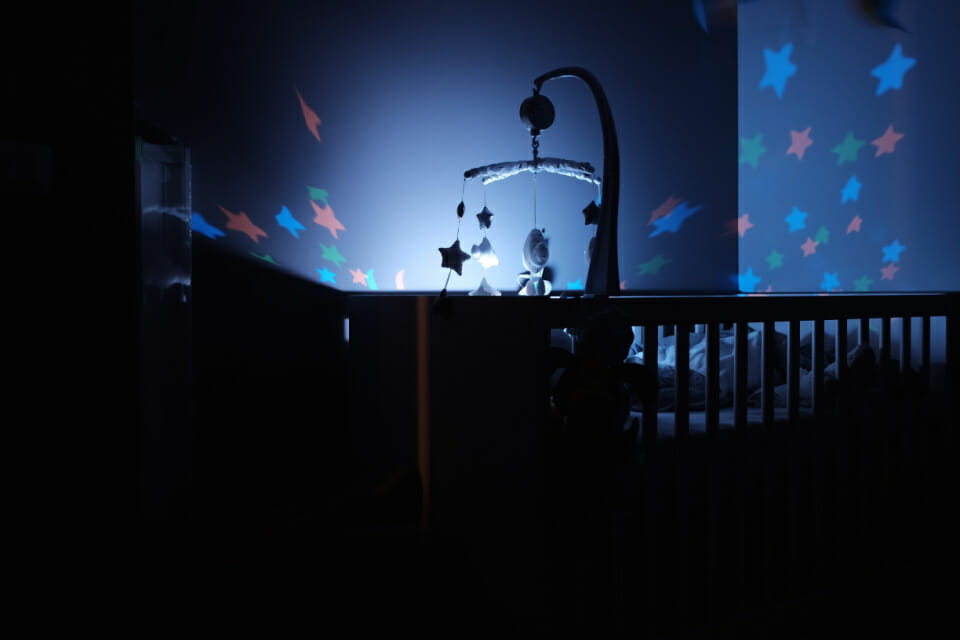
The other common issue associated with sleep is the dark. Often children will see shapes of something scary or menacing in the dark when really it is an innocuous object such as a bookshelf or hat stand and that is what our brain does.
“Our brain makes sense of things and because we are wired so negatively it goes to the negative every single time. And its important to understand that kids cognitive abilities grow, their imagination gets more robust so they can imagine more things” Lynn describes.
There are some practical things we can do to help our children in these circumstances. If it’s dark and they are imagining things that are really just objects you can spend some time working on that or breaking this down.
You can turn the light on see that it’s not something scary and then to going forward it’s practising that every night. Prop them up, help them and then back away and encourage them to check themselves with a night light and hand the reins over to them so to speak. It’s a good idea to normalise the dark so it loses that negative connotation.
What’s more, you could start to have fun in the dark by simply laying with them and telling jokes or stories. Throw a glow stick party in the dark and associate the dark with fun and happy vibes. Incorporate fun lighting such as fairy lights or LED lighting with remote controls.
The control gives them a sense of power and sense of reality at the same time. It’s not just cognitive ability or recognition but the need to practice it and give them power and control.
Fear
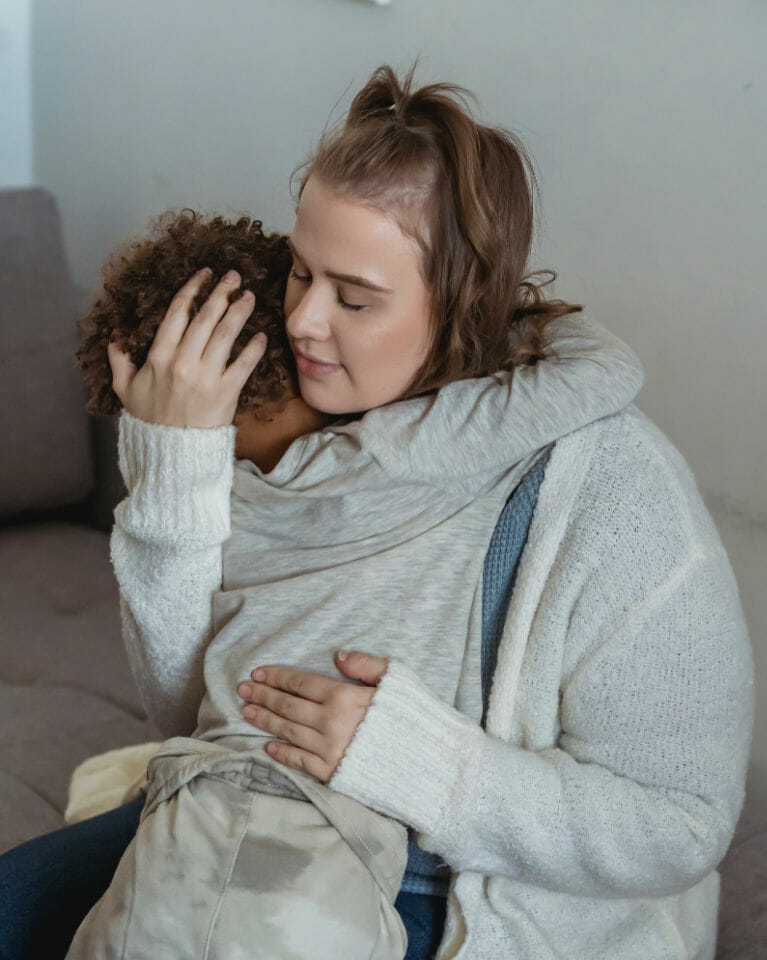
Another issue that seems to arise in children, and even adults, is someone actually breaking in to their home, and that’s a fear.
“I have to check in – have they heard something on the news or talk at school and sometimes it’s just their imagination and its that scary negative angle that our thoughts can go to,” says Lynn.
“And that’s about taking them around and showing them that everything is locked and for some kids this still persists and that’s just playing the long game with them. Keep doing the same thing until they realise they are safe. And that’s what we have to get through.”
Imagination techniques can work well with children where they may have protectors to get their mind in a different place, and for long enough for them to be able to fall asleep.
Lynn’s favourite technique or practice for children and adults is Yoga Nidra, which is a meditation that works quite quickly and it turns your attention to your body parts, one at a time. Also called yogic sleep it is a state of consciousness between waking and sleeping, like the “going-to-sleep” stage. Yoga Nidra works with the autonomic nervous system.
The autonomic nervous system regulates processes of the body that take place without a conscious effort such as heartbeat, breathing, digestion and blood flow. This system also includes the sympathetic and parasympathetic nervous systems. And meditation helps us calm the sympathetic nervous system; mainly, our fight-or-flight response.
It’s so appealing as it takes hardly any time to indulge in our imagination or our worries or thoughts and if we keep it going long enough we’re tired and we fall asleep.
The core of this is that our attention is on something that’s not scary to our brain or our nervous system. When we’re in our calm relaxed state all the hormones that are meant to support sleep come, such as melatonin.
It’s when we’re thinking about scary things that we’re in fight-or-flight response and we have things such as adrenaline and cortisol that don’t support sleep, running through our system. Yoga Nidra feeds our brain the safe messages that we need to support sleep.
Routine or predictability are good connections or associations, to have before going to bed. Feeding our minds with something amusing or pleasant whether via a book or a made up story from mum and dad.
Children love routine

Children love routine so it’s good for them to know what comes next. Our body can be conditioned so it knows that after your evening routine the thing that comes next is sleep.
Predictability to our nervous system is safe. When it comes to being in our calm zone the meditations come into play as does breathing.
We can send safe messages to our brain by choosing to fill our minds with fantastical things that aren’t real, things that are interesting or engaging to our thoughts. You can tell your children stories with prompts so you are engaging them and can keep a story going where they can fill the gaps in with whatever is interesting to them. You can then introduce breathing to the story and for the children it works in that it’s a fun creative strategy in sending safe messages to the brain. So it’s a big yes to routine!
We all need to practice strategy and you have to know that children must come back to the calm zone first, in order for them to be affective.
There is no point practicing mediation or story telling if your child is in the throws of a panic attack or meltdown. For some children getting them back in the calm zone is simply just having you there with your arm on them, close proximity and then leaning into breathing.
‘What If’
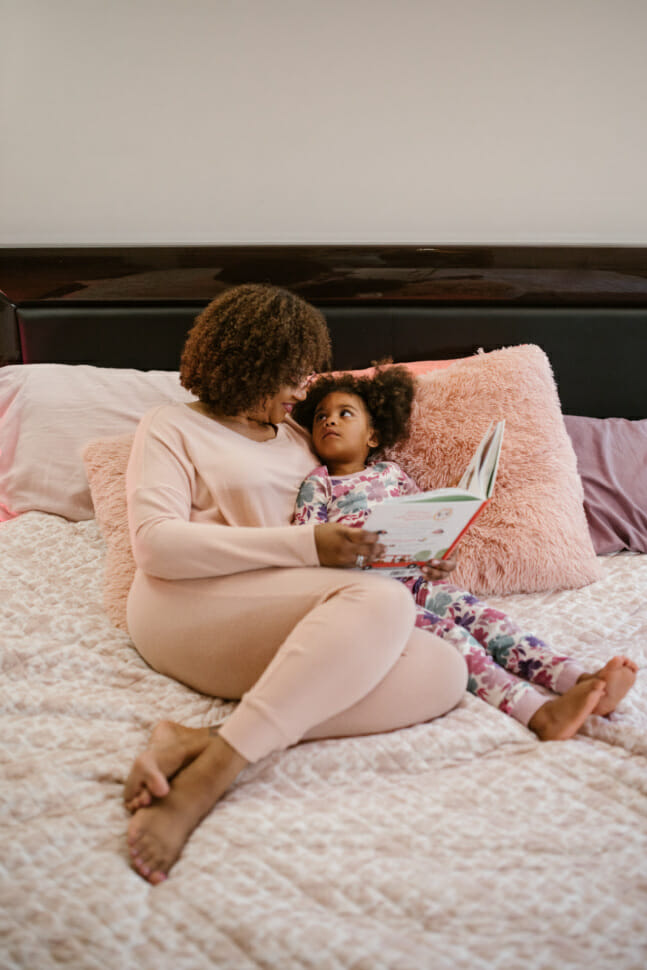
Or in Lynn’s words, “The other technique I like is a bit of humour and funny or just weird. And I’ve written a book just on this called “What If.”
“A lot of anxious thoughts when we’re talking about worries start with ‘What if’ and the strategy can be with our smart brain – and for a quick review when we’re anxious a smart brain isn’t in control our emotion brain is. So survival takes over everything. When our smart brain isn’t on we’re not in our calm zone.
“When our smart brain is on we are in the calm zone and that’s what we want. What engages our smart brain to be switched on is funny and novel things.
“You can turn the What If game into something non sensical and funny and kids can come up with good ones and it can be a transition to lead into breathing and it can be more engaging and have more power to break the momentum. But you need to practice, for anything to be automatic it has to be rehearsed.”
Some amazing practical advice and take always on chasing that elusive quality sleep! We have the tools to ensure our kids never feel alone or scared of the dark.
Get access to sleep tips, calming music, meditations, and recipes in The Healthy Mummy 3 day sleep program.
Our comprehensive 3 day program, will provide you with:
- Meal plans for simple nutritional swaps to improve sleep quality, including recipes for 3 main meals & 3 healthy snacks per day
- Guided breath-work programs targeting relaxation & de-stressing priming you for refreshing sleep
- Guided Yoga, Pilates & Meditations to establish a connection between physical and mental relaxation for improved sleep
- Podcasts from sleep-expert and Naturopath on how to get a better nights sleep
- Info-blogs from our expert Wellness Team, with easy and realistic strategies for relaxation and a better nights sleep
- Easy to follow 3 day program guides you on when to take each step to make things super simple and effective
- Everything at your finger tips you can easily access the program from your Healthy Mummy account on your smart device

